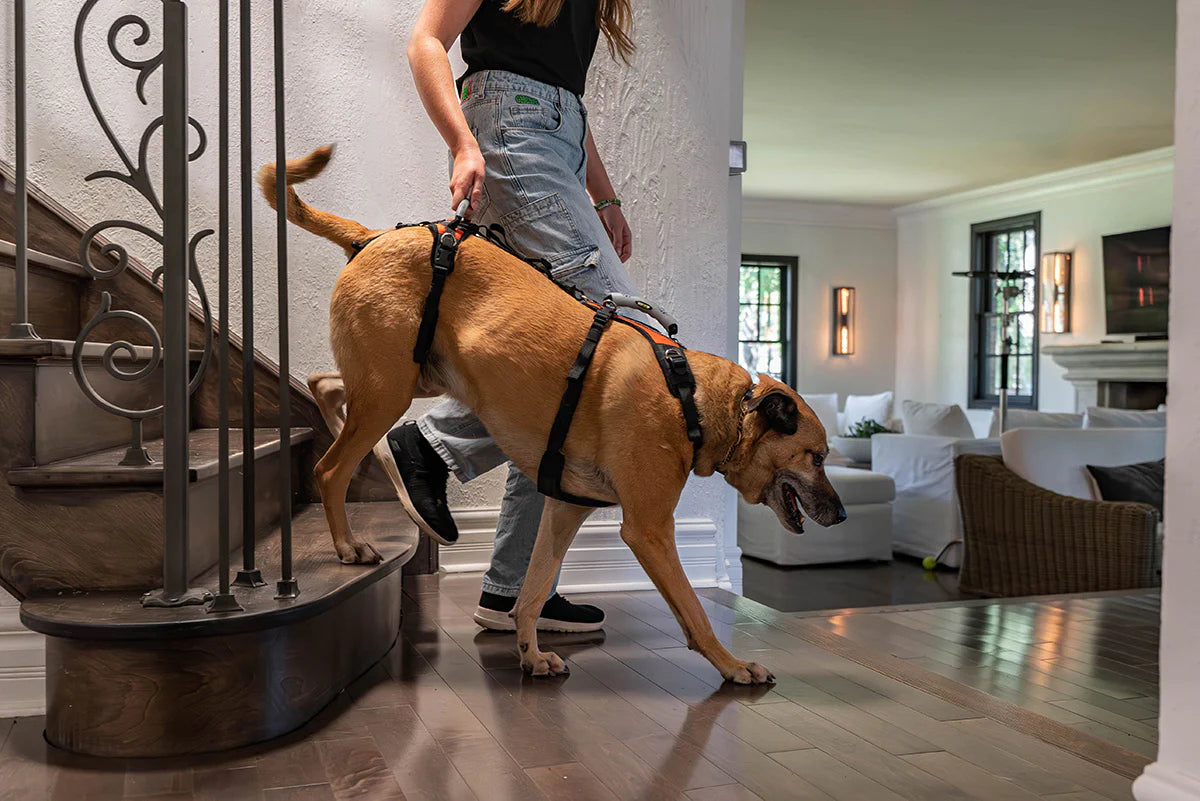How to Travel with a Disabled Dog

 Traveling with an animal is never easy, but there are more complications when a disabled dog is involved. Kennels are difficult enough for fully-abled dogs, and it can be daunting to ask friends or family to watch a dog with special needs. Plus, no one knows how to take better care of a disabled dog than its owner. From driving to flying to choosing a place to stay and sights to see, here are a few things to keep in mind when planning a trip with a disabled dog.
Traveling with an animal is never easy, but there are more complications when a disabled dog is involved. Kennels are difficult enough for fully-abled dogs, and it can be daunting to ask friends or family to watch a dog with special needs. Plus, no one knows how to take better care of a disabled dog than its owner. From driving to flying to choosing a place to stay and sights to see, here are a few things to keep in mind when planning a trip with a disabled dog.
General Tips for Traveling with a Disabled Dog
In both cars and planes, there are two major things to keep in mind:- Keep medication handy: Many disabled dogs have needs beyond a wheelchair. Make sure medications are easily accessible in case of emergencies.
- Bring a small blanket or shirt that smells like home or a favorite toy or pillow. Something that reminds them of home can keep a dog calm both on car trips and flights.
Hotels for Disabled Pets
Finding lodging can be a challenge when traveling with a special-needs dog, as some hotels don’t allow any pets. Websites like BringFido.com list pet-friendly hotels. However, some hotels only allow certain breeds and sizes, so double check. Also, some hotels charge fees for dogs, and many will not let you leave your dog inside the room unattended.
In the case of choosing a vacation rental over a hotel, it’s important to make sure the rental is accessible. While most hotels are wheelchair-friendly, not all private homes and vacation rentals are. Sites like HomeAway.com allow users to filter vacation rentals by wheelchair accessibility.
When it comes to hotels or vacation rentals, disabled dogs need more floor space than other animals so they can turn around in their wheelchairs. This may require booking a larger room or rearranging furniture. Disabled dogs, especially those with spinal injuries, are often more prone to accidents, so their owners may consider bringing an extra dog bed and possibly washable pee pads.
Car Travel with Disabled Pets
According to the Humane Society, traveling by car is often easier for pets than flying, but can still present its own challenges. When driving with a disabled dog, secure them rather than let them roam freely. Also, since pressure sores can be a big problem with wheelchair-bound dogs, let them move around and go to the bathroom at least every three hours.
Keep an emergency travel kit when traveling with a disabled dog. It can include, but shouldn’t be limited to:
- Water
- Bowl
- Towels for any accidents
- Treats
- A blanket that smells like home
- First-aid kit
- Pillow or bed
- Toolkit in case cart needs to be adjusted
Air Travel with Disabled Pets
If your disabled dog is small, air travel can still be a good option. You probably won’t want to leave a disabled dog in the cargo hold, though, like you might with a fully healthy one.
This is the hardest part about air travel with a disabled dog: If you do bring it on the plane, your dog must require no attention during the flight and cannot be removed from its carrier until you’re off the plane. If your dog can only stay in a carrier for two hours, that’s the longest flight you should book.
A pet is considered a carry-on item, and it has to fit under a seat, not overhead. Each airline has their own restrictions, but typically if the dog still can fit in a carrier, it’s fine to bring on a domestic flight. Some airlines may charge a fee for dogs, and some only allow a certain number on board an aircraft on a first-come, first-served basis.
Additionally, the dog has to be able to reasonably stand up and move around within the carrier. In other words, the carrier can’t be too small for the animal. If the dog would not typically stand or move around much anyway, it just has to have room in the carrier to be able to do that if it wanted or needed to.
Some airlines will provide dog carriers, though some charge for them. Personal carriers that meet the airline’s size restrictions are allowed, but typically need to be ventilated and leak-proof.
Finally, airlines require a recent veterinary certificate of health before allowing passengers to fly with their dogs. Passengers also must have food and water readily available for their dogs.
Every trip, hotel, airline, destination, and dogs is different, so always do specific research for each leg of your trip. Traveling with a disabled dogs presents complications, but is worth considering for folks who enjoy life more when their entire family is along for the ride.








